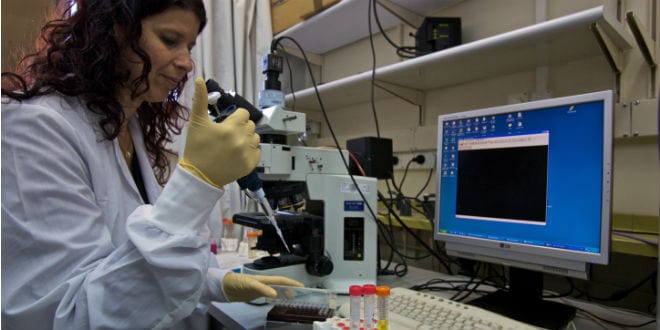Smaller scientific research institutes haven’t had much of a fighting chance to be included among the best in the world according to the Nature Index of the prestigious journal Nature. But this year, the index has taken quality and not just size into consideration, making Israel’s Weizmann Institute of Science in Rehovot number three globally in a new “normalized” ranking that assesses the contributions of an institution to its scientific articles, compares these to the papers published in high-quality journals and to its total scientific output.
“Size is not everything,” proclaims a Nature press release on Wednesday evening. “Some smaller institutes are punching above their weight.” The Nature Index 2019 – a normalized ranking that adds a new perspective to the relative contributions of each institute – reveals a “very different set of leaders among academic institutions.”
While the standard ranking held few surprises, the normalized ranking, according to Nature, takes into account the number of high-quality articles published as a proportion of an institute’s overall output in the natural sciences. This normalization –enables small institutes to be ranked alongside large ones. The index tracks contributions to research articles published in 82 high-quality natural science journals, chosen by an independent group of researchers. These contributions are drawn from some 60,000 articles published in journals included in the Nature Index, and compared with those in some 3.88 million articles tracked in a digital database for scientific publication.
In the “standardized index,” the Weizmann Institute of Science was ranked among the top 100 research institutes in the world and number one in Israel.
The normalized ranking listed Cold Spring Harbor Laboratory in the US, the Institute of Science and Technology Austria, and the Weizmann Institute of Science in Israel as the top three. David Swinbanks, founder of the Nature Index, said: “The inclusion this year of a normalized ranking alongside the standard Nature Index annual tables is especially interesting because the ranking draws to light some smaller institutes that are proportionally outstripping research powerhouses and would otherwise remain buried much lower down in the standard rankings.”
The smallest institutions in the top 10, added Swinbanks, “have some common features – ambition, as disclosed by mission statements about striving to be the best in the world, interdisciplinarity, with the strong embrace of collaboration across fields, and in several cases, the backing of Nobel Prize laureates.”
The Weizmann Institute of Science is one of the world’s top-ranking multidisciplinary research institutions. Noted for its wide-ranging exploration of the natural and exact sciences, the Institute is home to scientists, students, technicians and supporting staff. Institute research efforts include the search for new ways of fighting disease and hunger, examining leading questions in mathematics and computer science, probing the physics of matter and the universe, creating novel materials and developing new strategies for protecting the environment.
The institute was established in 1934, 14 years before the State of Israel. It differs from other Israeli universities in that it offers only graduate and postgraduate degrees in the natural and exact sciences.
It is a multidisciplinary research center, with around 3,800 scientists, postdoctoral fellows, masters of science and doctoral students, and scientific, technical, and administrative staff working at the Institute.
As of 2019, six Nobel laureates and 3 Turing Award (in computer science) winners have been associated with the institute.
It was originally founded as the Daniel Sieff Research Institute. Weizmann had offered the post of director to Nobel Prize laureate Fritz Haber, but took over the directorship himself after Haber’s death en route to Palestine. Before he became President of the State of Israel in February 1949, Weizmann pursued his research in organic chemistry at its laboratories. The institute was renamed the Weizmann Institute of Science in his honor on November 2, 1949.
In 1959, the institute set up a wholly owned subsidiary called Yeda Research and Development Company to commercialize inventions made at the institute. By 2013 the institute was earning between $50 and $100 million in royalties annually on marketed drugs including Copaxone, Erbitus and Rebif.
Weizmann Institute President Daniel Zajfman commented: “We have known for a long time that size is irrelevant when it comes to excellence in science. For the Weizmann Institute of Science, striving to be the best involves attracting the best scientists and letting them follow their curiosity. Interdisciplinarity and collaboration across fields and across countries are simply part of our DNA, and we are proud of that fact. The Nature Index normalized ranking truly showcases the quality of top research, showing you don’t have to be big to be on the cutting edge of global science.”




